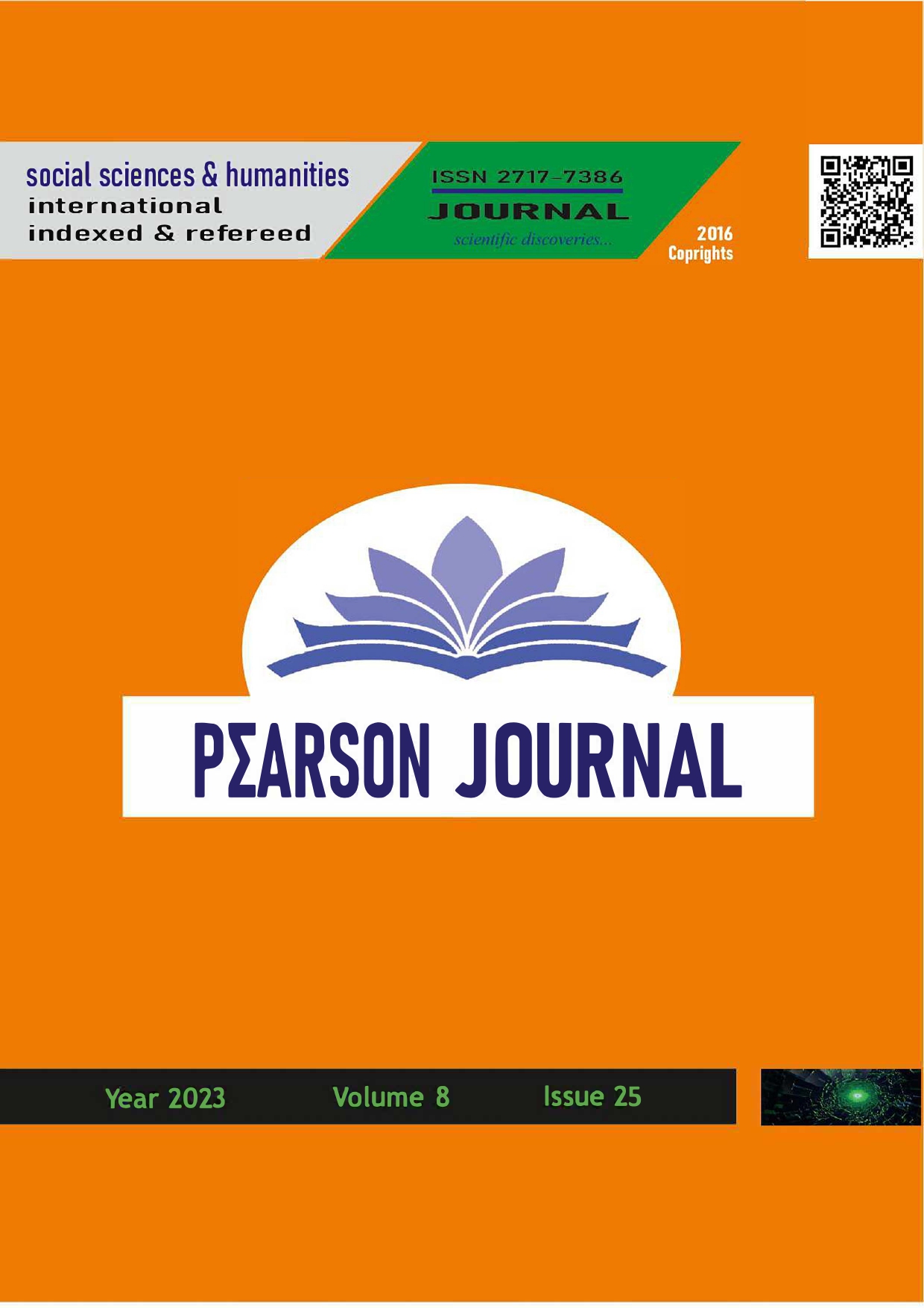Healthcare 4.0 and Health Management
DOI:
https://doi.org/10.5281/zenodo.8364806Anahtar Kelimeler:
Health 4.0, Health Management, Health Technologies, Industry 4.0Özet
Industry 4.0, which is rapidly developing and changing in today's world, has also heavily influenced the health sector and is gathered under Health 4.0. This study was conducted to discuss what Health 4.0 applications are and their importance in terms of health management within the scope of their contribution to health services and to make suggestions. In this context, Health 4.0 technologies and applications in the world and in Turkey are first explained. Subsequently, its importance in terms of Health Management was mentioned and suggestions were made. In terms of health management, it can be said that Health 4.0 primarily contributes to accessibility in health services, increases the comprehensiveness of health services, reduces health expenses, and is beneficial in terms of time and effectiveness in accurate diagnosis and treatment. In addition, it was emphasized that studies on the adaptation of health systems, health human resources and society to this rapid change are also important.
Referanslar
Aczon, M., Ledbetter, D., Van Ho, L., Gunny, A., Flynn, A., Williams, J., ve Wetzel, R. (2017). Dynamic mortality risk predictions in pediatric critical care using recurrent neural networks. In arXiv.
Al-Siddiq W. (2019). Medical wearables: how next generation devices will change healthcare. https://hitconsultant.net/2018/01/24/medical-wearables-devices/
Banerjee, S. (Sy), Hemphill, T., ve Longstreet, P. (2018). Wearable devices and healthcare: Data sharing and privacy. Information Society. https://doi.org/10.1080/01972243.2017.1391912
Cohen, M. F. (2016). Impact of the HITECH financial incentives on EHR adoption in small, physician-owned practices. International Journal of Medical Informatics. https://doi.org/10.1016/j.ijmedinf.2016.06.017
Cowie, M. R., Chronaki, C. E., ve Vardas, P. (2013). E-Health innovation: Time for engagement with the cardiology community. European Heart Journal, 34(25), 1864–
Demirci, Ş. (2019). Sağlığın Dijitalleşmesi - Digitalization of Health. Mehmet Akif Ersoy Üniversitesi Sosyal Bilimler Enstitüsü Dergisi, 10(26), 710–721.
Demirel, D. (2017). E-HEALTH APPLICATIONS in TURKEY. Pressacademia, 4(1), 422–432. https://doi.org/10.17261/pressacademia.2017.679
Fast facts on U.S. Hospitals, 2018. (n.d.). American Hospital Association. https://www.aha.org/statistics/fast-facts-us-hospitals
Wearable Technologies, https://www.bilgiustam.com/giyilebilir-teknoloji-urunleri-nelerdir/ Access Date: 13 December 2021
Grundy Q, Held FP, Bero LA. Tracing the potential flow of consumer data: a network analysis of prominent health and fitness apps. (2017). J Med Internet Res 2017 Jun 28;19(6):e233.
Hernandez Korner, M. E., Lambán, M. P., Albajez, J. A., Santolaria, J., Ng Corrales, L. del C., ve Royo, J. (2020). Systematic literature review: Integration of additive manufacturing and industry 4.0. Metals, 10(8), 1061.
Johnson, A. E. W., Pollard, T. J., Shen, L., Lehman, L. W. H., Feng, M., Ghassemi, M., Moody, B., Szolovits, P., Anthony Celi, L., ve Mark, R. G. (2016).
MIMIC-III, a freely accessible critical care database. Scientific Data. https://doi.org/10.1038/sdata.2016.35
Joszt L. (2018). Things About Wearable Technology in Healthcare. American Journal of Managed Care. https://www.ajmc.com/newsroom/5-things-about-wearable-technology-in-healthcare
Kuh, Z. (2019). SağliHi̇zmetleri̇ KullanimindDi̇ji̇tal BölünmeÜzeri̇neBi̇r Araştirma. 27–47.
Kusmin, K.-L. (2018). Industry 4.0. IFI8101-Information Society Approaches and ICT Processes.
Lal, H., ve Patralekh, M. K. (2018). 3D printing and its applications in orthopaedic trauma: A technological marvel. In Journal of Clinical Orthopaedics and Trauma. https://doi.org/10.1016/j.jcot.2018.07.022
Mandel, J. C., Kreda, D. A., Mandl, K. D., Kohane, I. S., ve Ramoni, R. B. (2016). SMART on FHIR: A standards-based, interoperable apps platform for electronic health records. Journal of the American Medical Informatics Association. https://doi.org/10.1093/jamia/ocv189
Perica, E., ve Sun, Z. (2017). Patient-specific three-dimensional printing for pre-surgical planning in hepatocellular carcinoma treatment. Quantitative Imaging in Medicine and Surgery. https://doi.org/10.21037/qims.2017.11.02
Pettey C. (2018). Wearables Hold the Key to Connected Health Monitoring. Gartner Inc. https://www.gartner.com/smarterwithgartner/wearables-hold-the-key-to-connected-health-monitoring/
Pravin, S., ve Sudhir, A. (2018). Integration of 3D printing with dosage forms: A new perspective for modern healthcare. In Biomedicine and Pharmacotherapy. https://doi.org/10.1016/j.biopha.2018.07.167
Rehman, M. U., Andargoli, A. E., ve Pousti, H. (2019). Healthcare 4. 0: Trends, Challenges and Benefits. Australasian Conference on Information Systems, 19, 556–564.
Republic of Türkiye Ministry of Health, https://www.saglik gov.tr, Access Date: 15 December 2021
Shickel, B., Tighe, P. J., Bihorac, A., ve Rashidi, P. (2018). Deep EHR: A Survey of Recent Advances in Deep Learning Techniques for Electronic Health Record (EHR) Analysis. IEEE Journal of Biomedical and Health Informatics. https://doi.org/10.1109/JBHI.2017.2767063
Statista, (2018). Percentage of US Adults That Were Willing to Wear Technology That Tracks Select Health Statistics as of 2018. https://www.statista.com/statistics/829479/willingness-to-wear-health-tracking-technology-us-adults/
Suresh, H., Hunt, N., Johnson, A., Celi, L. A., Szolovits, P., ve Ghassemi, M. (2017). Clinical intervention prediction and understanding using deep networks. In arXiv.
Tabanlı, B. (2019). Bilgi teknolojilerinin sağlık hizmetleri sunum kalitesine etkisi (Sakarya İli’nde bir inceleme).
Tanner, C., Gans, D., White, J., Nath, R., ve Pohl, J. (2015). Electronic health records and patient safety: Co-occurrence of early EHR implementation with patient safety practices in primary care settings. Applied Clinical Informatics. https://doi.org/10.4338/ACI-2014-11-RA-0099
Tekin, H. C. (2020). Kronik Hastaların Uzaktan İzlemine Yönelik Teletıp Platformu. Dokuz Eylül Üniversitesi Mühendislik Fakültesi Fen ve Mühendislik Dergisi, 22(64), 37–46.
Terry N, W. L. (2016). Liability for Mobile Health and Wearable Technologies. SSRN. https://ssrn.com/abstract=2725450
Tezcan, C. (2016). Sağlığa Yenilikçi Bir Bakış Açısı: Mobil Sağlık.
The New England Journal of Medicine (NEJM), https://www.nejm.org, Access Date: 12 December 2021
Vaidya A. (2017). Epic, Cerner Hold 50% of Hospital EHR Market Share: 8 Things to Know. Becker’s Hospital Review 2017. https://www.beckershospitalreview.com/healthcare-information-technology/epic-cerner-hold-50-of-hospital-ehr-market-share-8-things-to-know.html
Yang, G., Pang, Z., Jamal Deen, M., Dong, M., Zhang, Y. T., Lovell, N., ve Rahmani, A. M. (2020). Homecare Robotic Systems for Healthcare 4.0: Visions and Enabling Technologies. IEEE Journal of Biomedical and Health Informatics, 24(9), 2535–2549. https://doi.org/10.1109/JBHI.2020.2990529
Zadpoor, A. A., ve Malda, J. (2017). Additive Manufacturing of Biomaterials, Tissues, and
Organs. In Annals of Biomedical Engineering. https://doi.org/10.1007/s10439-016-1719-y
İndir
Yayınlanmış
Nasıl Atıf Yapılır
Sayı
Bölüm
Lisans
Telif Hakkı (c) 2023 PEARSON JOURNAL

Bu çalışma Creative Commons Attribution 4.0 International License ile lisanslanmıştır.


